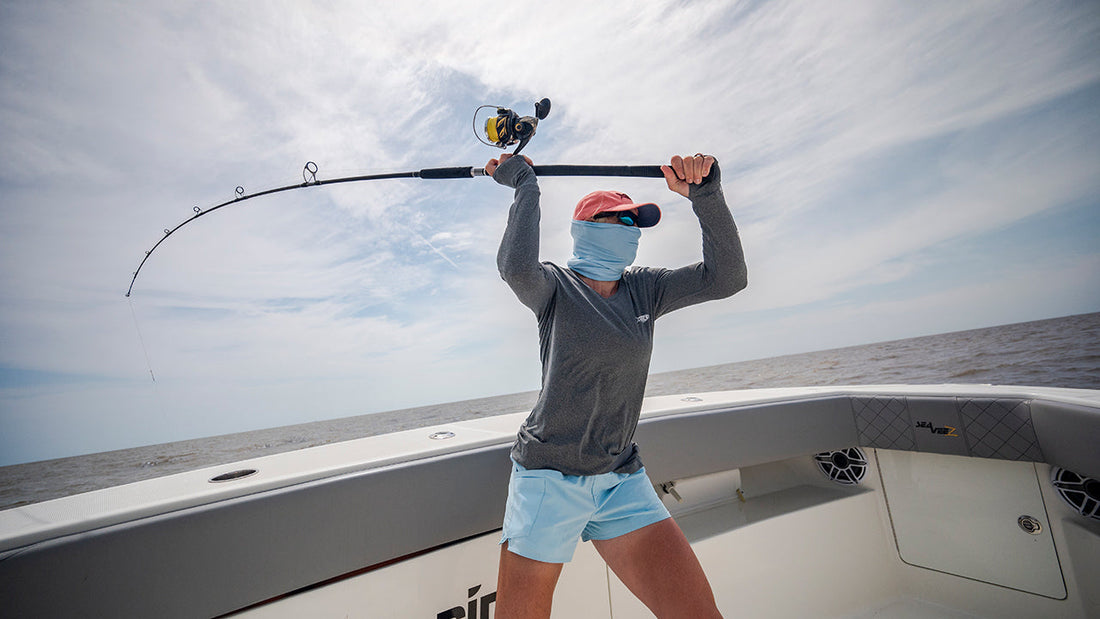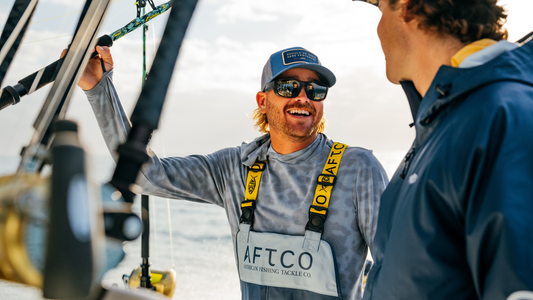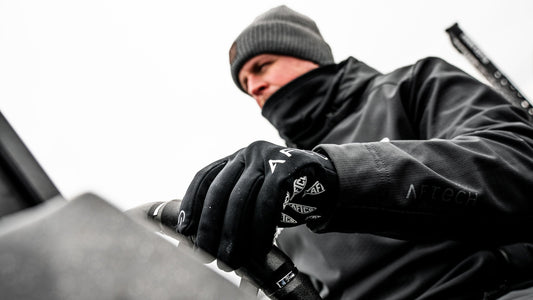
How to Cast a Spinning Rod Like a Pro
Casting to yellowfin tuna busting bait on the surface requires precision and practice. Captain Moe Newman of Journey South Outfitters is no stranger to making long casts with heavy poppers or stickbaits when the pressure is on. As a full-time fishing guide based in Venice, Louisiana, Captain Moe takes big-game anglers to tuna-rich waters far offshore. Doing so means breaking out the heavy spinning rods when the action is on top.
One of the main benefits of spinning rods is versatility. Anglers can target saltwater and freshwater species like trout, bass, northern pike, walleye, and catfish. These rods can handle several different lures and many types of baits. Spinning rods have downward-facing guides and a straight handle that lets line flow freely off the reel. Bails control the flow of the line, and with spinning rods, anglers can feel quick nibbles on the line while jigging, trolling, or casting.

Casting a Spinning Rod: Step-By-Step
1. Start with your bait outside of the boat.
2. Take a sideways stance.
3. Point your left shoulder in the direction you want your cast to go.
4. Put your left hand on the lower part of the rod butt, next to the reel seat if you're right-handed. Do the opposite if you're left-handed.
During the cast, your right arm will swing up and over your left in one fluid motion while your index finger releases the line. With casting, release is critical. If you release it too soon, your line won't go far enough. If you release too late, your lure will lose momentum and drop before it reaches your target area.
It will take several casts to find your rhythm, but it helps to imagine that you're casting like hands on a clock. For example, Captain Moe said, "Casts at 12 o'clock will give you rainbows, and casts at 9 o'clock will give you long drives, and you're not going to be happy with those." When your rod reaches the 11 o'clock position, that’s the best time to release to maximize distance and hit your target. For more casting tips beyond spinning rods, check out Take Me Fishing’s guide to casting.

Gear & Rigging
For Captain Moe’s offshore setup, she uses big poppers to land monster keepers. Her go-to heavy rod is a Shimano Ocea Plugger 8’ H paired with a Shimano Stella 14,000 spinning reel. Her go-to setup is just the start—these three spinning gear essentials are non-negotiable:
- Longer Rods = Longer Casts
Anglers should opt for longer rods because it leads to longer casts. The length of longer rods helps propel heavy lures further to increase your capability.
- Quality Spinning Reels
Designed to outlast the fighting power of the big game species you’re targeting. Big spinners should have reliable, smooth drags and plenty of max drag power geared for strength.
- Use Heavy Braid
Captain Moe prefers 80-pound Power Pro Maxcuatro braid because it's super thin so that you can fit more line on your reel, and it holds up against tough fighting fish. If anglers don't use heavy braid, it's only a matter of time until your catch breaks off and you're left empty-handed.
How to Prep Your Line

With your rod and reel ready, the next step is to prep your line. Captain Moe uses AFTCO Saiko Pro 80-pound Fluorocarbon Leader and connects it with a PR bobbin knot. This knot is great because its strong and slim profile casts smoothly through your spinning rod guides. Saiko Pro is a 100% custom formula fluorocarbon made in Japan for optimum leader performance.
To finish rigging, attach a split ring to the end of the leader. Captain Moe prefers to tie on a strong split ring at the end of the fluoro leader and uses a pair of split-ring pliers to quickly change out her lures anytime, which is perfect for making quick adjustments on the water.
Getting comfortable and confident with a spinning rod takes practice, but these pro tips will help you improve your skills faster and fish with confidence. Watch our How to Cast a Spinning Rod video, to see Captain Moe in action, demonstrating the techniques that make all the difference. To learn more tips beyond casting, explore our full lineup of fishing how-to videos, which include fishing tackle recommendations, recipes, and more.






